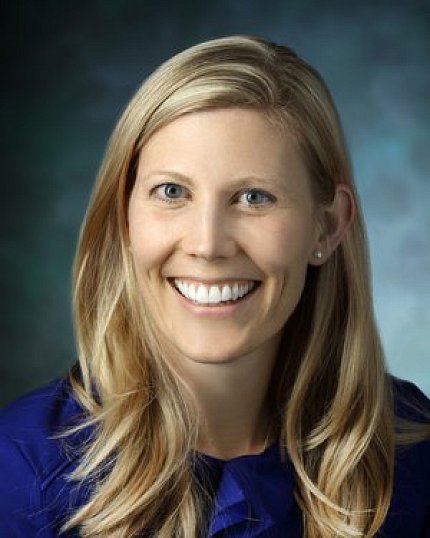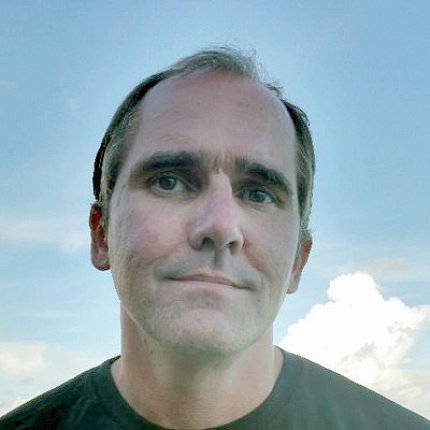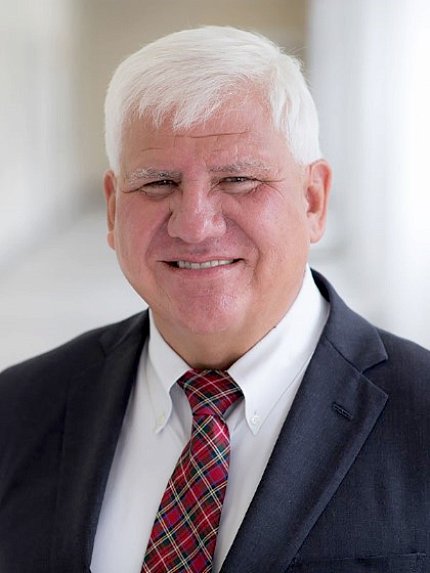Mix of Challenges, Joys
Researchers with Disabilities Discuss Work Experiences

From “living with disabilities” to “thriving with disabilities,” this was Dr. Bonnielin Swenor’s motto when she founded the Johns Hopkins University Disability Health Research Center. However, sparking a paradigm shift in people’s perspective of disability doesn’t come easy. It starts with sharing experiences.
“Disability is not something to overcome. It is a part of my identity,” said Swenor, who alongside Drs. John Dennehy and William Jacobs, discussed the joys and challenges of disability during a June 28 NIAID diversity and inclusion panel.
NIH’s Dr. David Kosub moderated the discussion and shared his own insights as a scientist with retinitis pigmentosa.
Currently a health science policy analyst in the Office of the Director, Kosub described the challenges of working on the lab bench with a condition that causes progressive vision loss, recalling a seminal moment early in his career.
He was performing a mock HIV experiment with his mentor standing over his shoulder. His principal investigator stated, after overseeing the trial run, that Kosub would not be allowed to work with infected blood out of concern that he might accidently be exposed to the virus.
Experiences like these aren’t unique to Kosub. Swenor described feeling that her career ended before it began when she experienced a retinal hemorrhage. After a period of depression, she realized that she was internalizing the societal stigma towards individuals with disabilities.
Swenor noted that medical models of disability promote negative stereotypes and ignore how people with disabilities view themselves, despite more than 67 million Americans having a disability.
Swenor concluded that the best way to shift the paradigm to “thriving with disabilities” is to be anti-ableist by continuously including people with disabilities and by increasing accessibility.

Dennehy, a professor of biology at Queens College of the City University of New York, has been deaf in both ears since he was 2½ years old. He described his early experiences as having been “mainstreamed” to public schools, where the needs of people with disabilities were not necessarily being met. He learned to hide his deafness due to discrimination, bullying and lowered expectations of superiors.
Dennehy learned to rely heavily on lip-reading, which has become nearly impossible due to mask-wearing during the Covid-19 pandemic.
He shared a list of Do’s and Don’ts when speaking with someone who is deaf.
Do: Get someone’s attention with a tap. Rephrase a statement with different words.
Don’t: Repeat the same words louder. Get frustrated and dismiss an ongoing conversation as it can be very demoralizing.

Jacobs, a professor of microbiology and immunology and molecular genetics at the Albert Einstein College of Medicine, was diagnosed with retinitis pigmentosa at age 6. The condition has significantly reduced his field of vision from 110 degrees to 10 degrees, which he compared to looking through a straw.
“Reading,” Jacobs explained, “is very time inefficient.”
While hopeful for a remedy in gene therapy, he remains optimistic. A chance meeting with the blind Judge Zak Yacoob, an anti-apartheid activist and a former justice of the Constitutional Court of South Africa, changed Jacob’s perspective on life.
“You have a disability, you are not disabled,” Yacoob told him. The judge had overheard Jacobs complaining about his condition.
Earlier that day, Jacobs had fallen down a flight of stairs due to poor lighting. Recalling this during the conversation, he emphasized the importance of providing accommodation to persons who are visually impaired or blind, such as having appropriate lighting, spaces that are safe and accessible and working with someone who can assist with regular day-to-day professional activities when needed.
Yacoob’s words ring true for many individuals with disabilities. Swenor, Jacobs and Dennehy echoed the importance of understanding the challenges and joys faced by people with disabilities.
An NIH blog post from 2021 cited a publication from the National Center for Science and Engineering Statistics that of all graduates awarded doctoral degrees in the biological sciences in 2019, approximately 9 percent reported having one or more disabilities.
In the words of Swenor, “our choices, the decisions we make, the people we include or exclude, purposefully or not, matter. They have an impact.”
An archived recording is available to NIH staff on the NIAID Diversity and Inclusion channel on Microsoft Stream at https://bit.ly/3RUg8Cp.
For information on employee resource groups focused on the interests and quality of life for staff and trainees with disabilities, visit EDI at: https://www.edi.nih.gov/people/sep/pwd/about.
